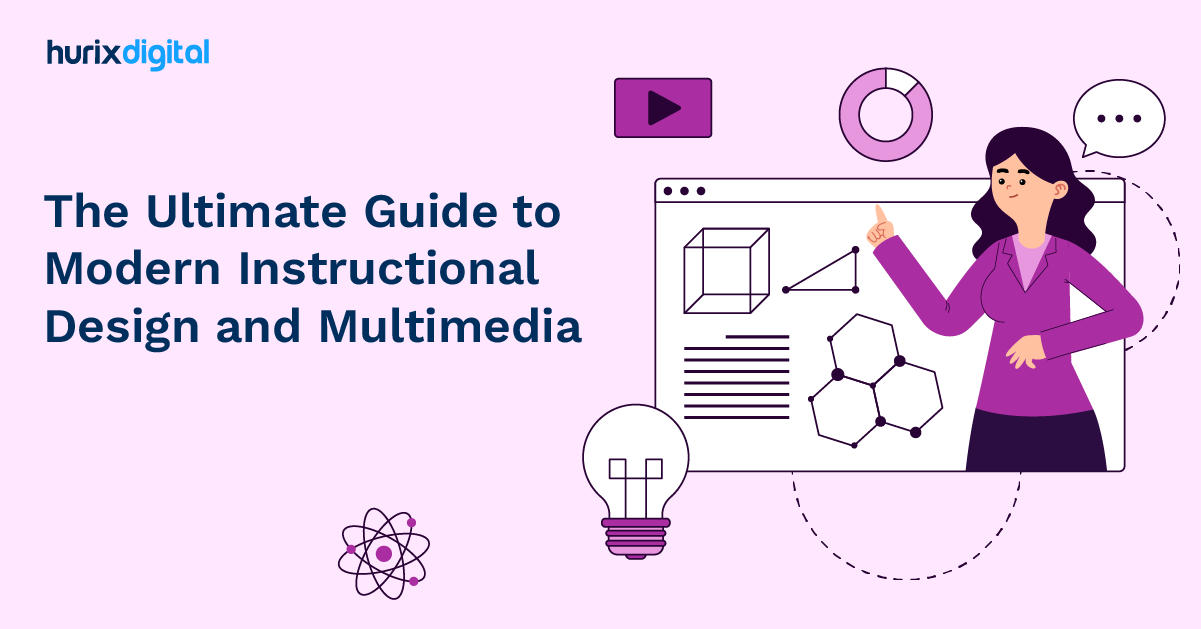
Learning Experience Design (LXD): An Overview and Best Practices
It is a universally acknowledged fact that people learn best from experiences. This is one reason why content creators and designers are leveraging advances in digital technology to redefine traditional learning and create experiences for learners.
As for businesses, the consumer is the king; in the case of learning, we are now living in the era of the end learners, which means all learning modules now have to be designed to meet their needs. A way to achieve this is through learning experience design (LXD).
Table of Contents:
- What is Learning Experience Design (LXD)?
- Best Practices in Learning Experience Design:
- Create an LXD Plan
- Understand Your Learners
- Intuitive Storytelling
- Goal-Oriented Design
- Weaving in Psychological Insights
- Practical Learning
- Understanding Design Constraints
- Be Consistent
- Create a Wireframe And Test Early
- Utilize Adaptive Learning Technologies
- Consider Adding Gamification Features
- Use Microlearning Techniques
- Encourage Collaborative Learning
- In Conclusion
What is Learning Experience Design (LXD)?
LXD Org defines LXD as a process to create experiences that help learners achieve their learning outcomes using a user-centered, goal-oriented approach. LXD is a holistic approach to education and is built around principles and practices that ensure that learning is multidimensional, entertaining, engaging, immersive, contextual, and informative.
LXD best practices include a focus on both content and the user experience. For an LXD to be effective, it is important to understand the audience, their unique needs, and the environment in which they are learning.
LXD, therefore, requires multidisciplinary expertise including knowledge of interactive design, neuroscience, cognitive psychology, and teaching. All these elements come together to create a completely new design discipline, aptly known as learning experience design. LXD improves usability and increases learner satisfaction and interaction with the content.
LXD is fast gaining ground in higher education with several educational institutions, both schools and universities, incorporating LXD best practices to engage their learners. Here, in this article, we discuss LXD’s best practices to create amazing experiences across multiple touchpoints including websites, apps, and games.
Also Read: Difference Between Instructional Design & Learning Experience Design
Best Practices in Learning Experience Design:
1. Create an LXD Plan
As with everything else, LXD requires extensive planning to understand goals and user needs. While creating an LXD plan, give due attention to the following:
- Visual design strategy
- Design usability and user-friendliness
- Design testing and feasibility
Keep in mind that all your design disciplines should be about the student experience, and that is possible only by putting them at the heart of the design.
Taking a human-centered approach will help you design an experience that the learners can easily relate to. Provide an interactive design that shows them the options they have, the choices they can make, the things that they can do, and the goals they have to achieve.
2. Understand Your Learners
LXD is all about designing an experience that is meaningful to the learners. To do this, it is important to design interactive modules from their perspective. Make a note of the knowledge and the skills that are required to be incorporated into the lessons. Accordingly, create LXD that will help them learn new concepts or master new skills.
3. Intuitive Storytelling
Learning Experience Design is not just about design – it is about supporting the main story, bringing alive and weaving together its main characters and the plot, the progress, the milestones, and finally, the climax, or realizing the goals of the learning.
The interactive design should motivate the learners, give them a sense of direction, immerse them into the story, challenge them on their learning journey, and help them gain from the course.
4. Goal-Oriented Design
To support intuitive storytelling, the UI should be simple, clean, and understandable. It should include learner-driven experiences such as clicking to move to a new webpage, loading a pop-up window, linking to social media, etc.
It is vital to find the right approach to design an effective learning experience and find creative ways to get a message across to the learners without deviating from the story.
5. Weaving in Psychological Insights
An LXD is effective in a higher education context when it is based on human psychology. So an LX designer should have a deep understanding of how human cognition works and how students learn from an experience. An effective LXD is one that includes psychological insights in the design disciplines and so designers should have psychological expertise to understand learner needs and design for them accordingly.
6. Practical Learning
To design a learning experience, the content developers need to have both a theoretical and practical understanding of learning as it will help them design goal-oriented learning experiences.
For instance, for a lesson on Masai Mara, you can have interactive videos that virtually transfer learners to the national park and then have the action shift to the various aspects of the game reserve while also bringing alive the lives of the people living in this region.
Having a clear understanding of what works and what doesn’t in specific settings and designing courses accordingly can greatly strengthen the learning experience.
7. Understanding Design Constraints
Before initiating the LXD process, keep in mind the following design constraints:
- Budget and time: It is important to work within the budget and timeframe. A good LXD may require extensive budget and time, but the course may have to be launched within a specified time.
- Technology: Sometimes, technical architecture prevents the use of some features so it is important to factor this in while designing a learning experience.
- Reverse compatibility: You may need to match current content with old content and use existing photos, videos, etc. A good LXD is about seamlessly integrating the new with the old to create a unified learning experience.
8. Be Consistent
An inconsistent design will not serve its purpose. Rather, it will lead to a cognitive overload, thereby defeating the very purpose of the LXD.
Keep the UI and visual design simple and consistent, for instance, the start and go-to buttons should be positioned at the same place on all pages.
This also holds true for other elements; for example, if you have placed image descriptions below the image on one page, the pattern should be repeated for all pages. Also, maintain similar formatting since any deviation will divert attention from the content.
9. Create a Wireframe And Test Early
In the first instance, create low-fidelity UI wireframes which you can change on client feedback without adding to the costs. Even with all the right LXD elements in place, the final result may not meet the end goals.
Therefore, it is crucial to test the design at an early stage with a group of actual learners and gain feedback. Analyze the feedback to address the issues.
10. Utilize Adaptive Learning Technologies
In recent times, adaptive learning technologies have transformed LXD by enabling content to be customized in real-time to suit the needs of individual learners.
By examining data related to learner progress, preferences, and difficulties, adaptive technologies allow for modifications in the content’s difficulty, offer supplementary resources, and suggest particular activities.
Therefore, integrating adaptive learning into LXD can help you craft a more individualized experience that aligns with each learner’s current understanding.
For instance, if your student performs well in one domain but faces challenges in another, adaptive tools can direct more resources to the area of struggle, delivering additional practice exercises, interactive tutorials, or immediate feedback to promote growth.
11. Consider Adding Gamification Features
When you blend gamification into your content, you can encourage students to finish mundane tasks, participate in new subjects, and reach designed goals timely. You can add exciting features such as points, badges, leaderboards, and incentives to encourage a healthy competitive environment.
For instance, granting a badge upon mastering a skill offers positive reinforcement. However, make sure these gamification features align with your educational goals.
You aim to enrich the experience rather than distract from it. Carefully implementing gamification can elevate your learning design into an engaging and motivating journey.
Also Read: The Power of Gamification in Education: 7 Powerful Strategies to Implement
12. Use Microlearning Techniques
You know how overwhelming lengthy lessons can be for your learners. Break down complex information into bite-sized lessons using microlearning techniques. These small, focused modules (usually three to seven minutes long) help your audience understand and retain knowledge without feeling overloaded.
For example, if you’re a language professor, you can work on providing short daily lessons that focus on vocabulary, grammar, or conversational skills. This simple approach helps learners focus on dedicated tasks while managing a busy lifestyle.
13. Encourage Collaborative Learning
You can encourage your students to interact and engage in group activities more often. Collaborative learning is great for building teamwork, promoting critical thinking, and developing social skills.
For instance, you could make students work together to fix a real-world challenge, exchanging ideas and gaining knowledge from each other.
By promoting collaboration opportunities, you create a more interactive experience and assist students in developing skills that are beneficial beyond their educational environment.
In Conclusion
Online education has come a long way since it first made its appearance a decade ago. Digital technology has put the learner at the center of the learning process, necessitating a change in approach from the linear to the multidimensional.
For higher education institutions, learning experience design, or LXD, is the means to engage the learners, immerse them into the course, arouse intrinsic motivation, personalize learning and challenge the learners to meet their learning goals.
That said, an effective LXD has to effectively integrate design elements with psychological insights to achieve learning outcomes while putting the learner in the center of the experience.
And finally, keep in mind that an LXD is a journey and not a final destination. There is a need to constantly observe learner behavior and their work environment and integrate the insights into the LXD.
Let us guide the way with Hurix Digital for smarter, seamless learning solutions. Talk with our experts to learn more about how we can help you with effective learning experience design.

Senior Vice President – Business Development
Over 25 years of experience in the edtech and workforce learning industry with strong skills in Business Development, Customer Relationship Management (CRM) and Strategy.




